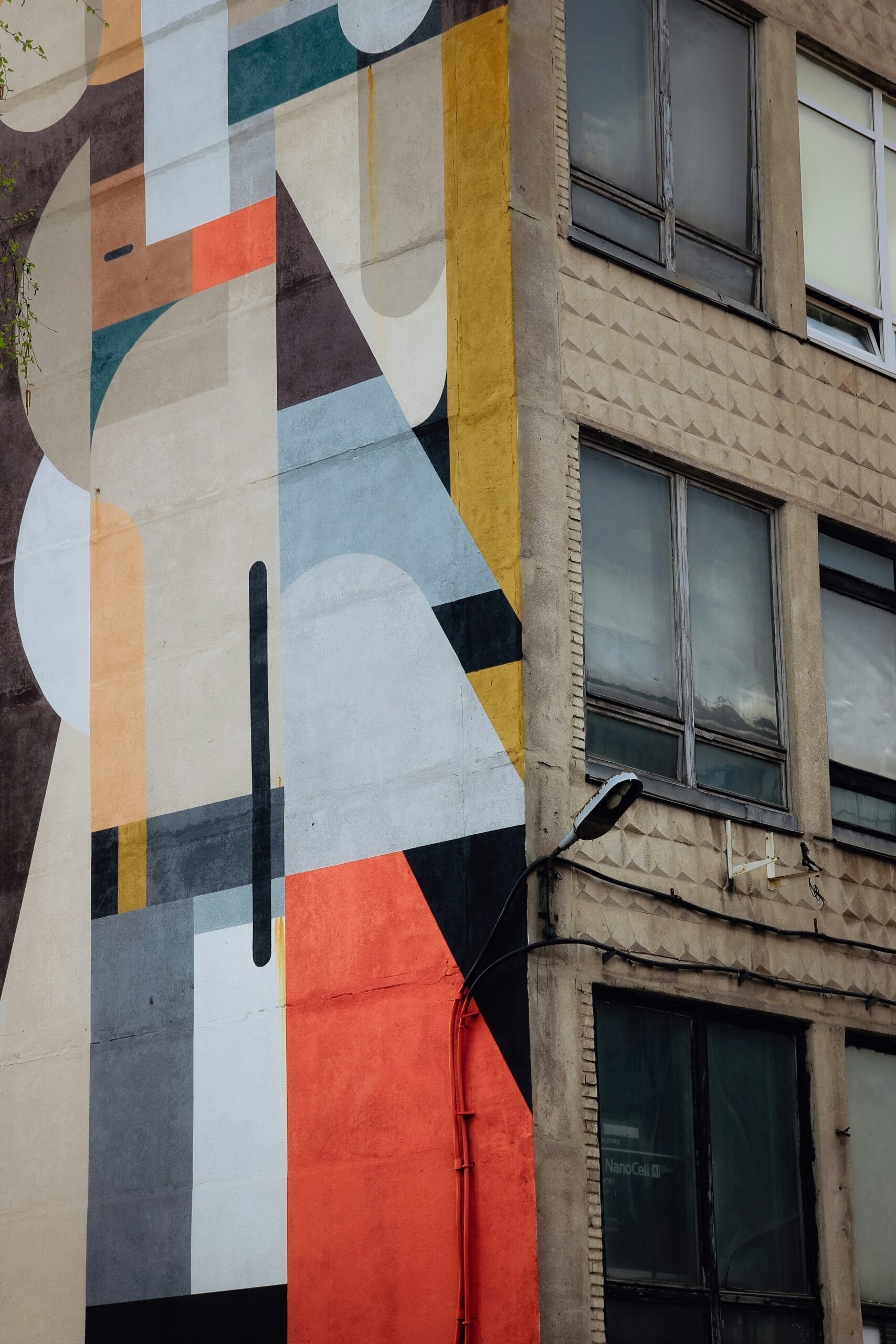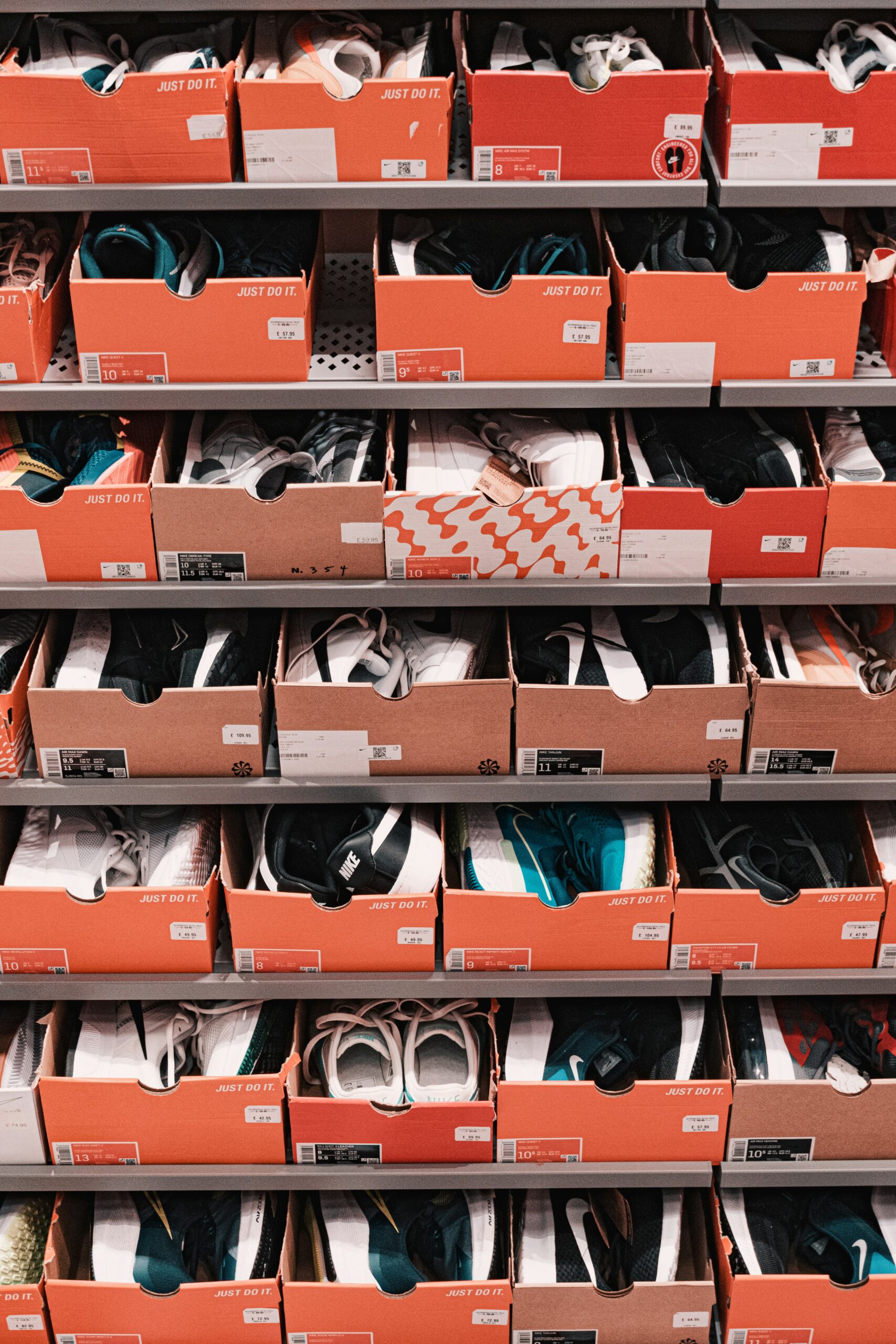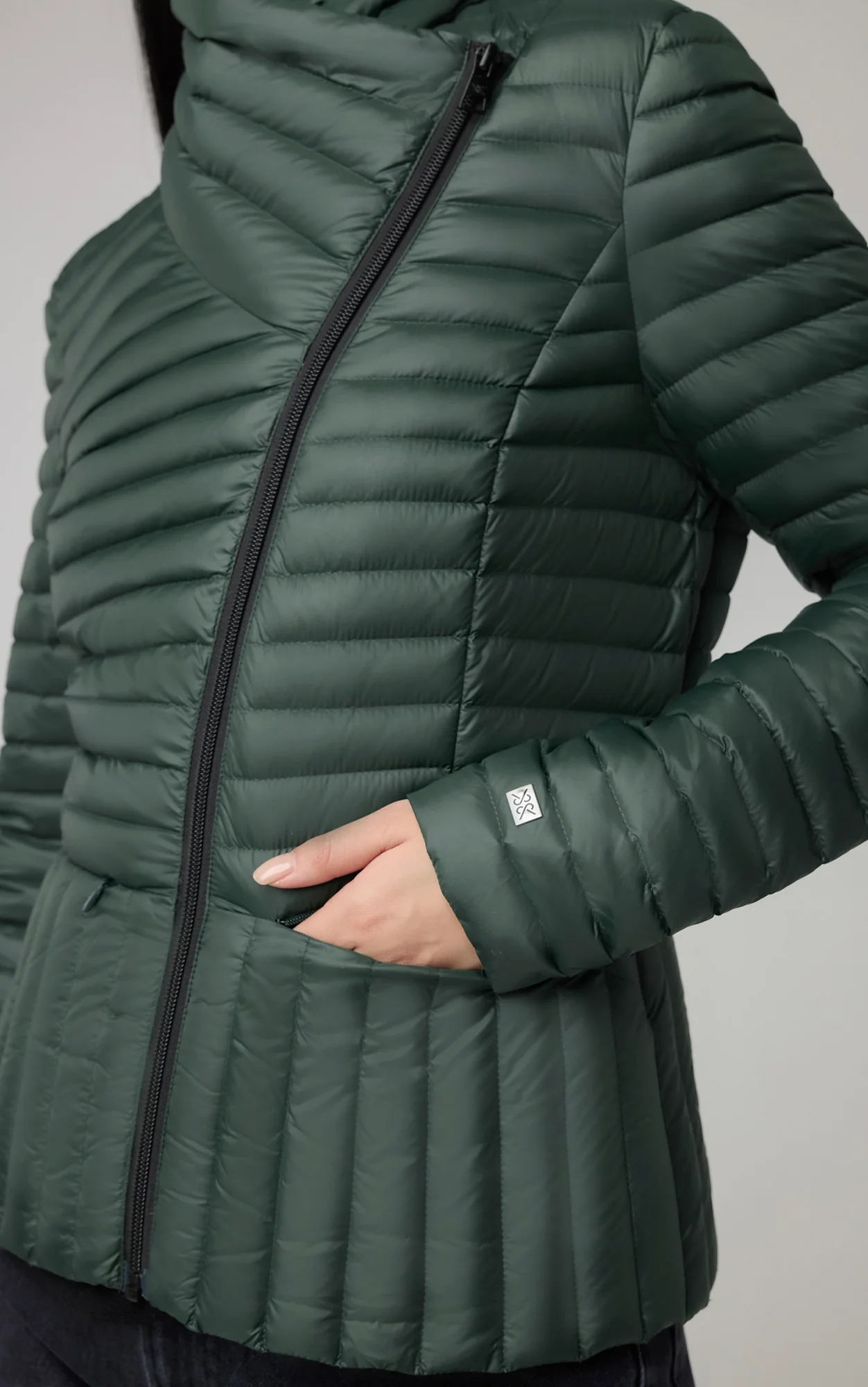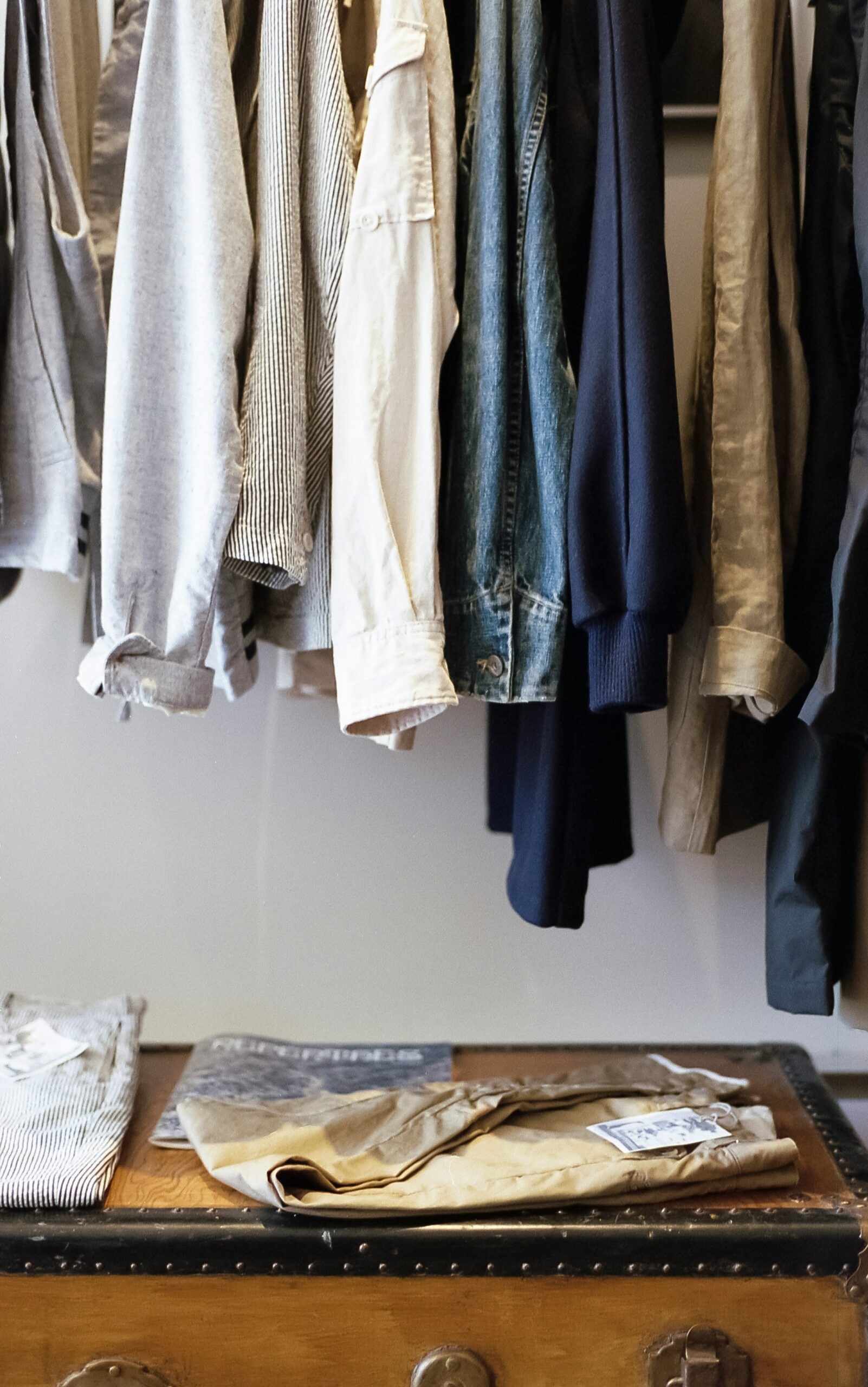Even though I’m comfortable with my body, I still hate buying jeans. It can be such a demoralizing experience. But I try to remember that I also hated buying jeans when I was 20lbs lighter and three sizes smaller, so it’s the task, not the body.
Over time, however, I’ve developed some tips that help me find jeans that fit and flatter without making me want to tear my hair out or bawl until my tear ducts run dry. Here they are:
Variety is the spice of life. Even if you’re going in to try on one specific style of jeans, always grab multiple styles. This way, if you discover that you hate the pair you’re trying on and how they look on you, you have other options. Options = Hope.
Look beyond the tag. Never take just one size. I’m a 27 in Sevens, a 28 in AGs and a 30 in Paige Premiums. And this can vary depending on style and rise. We’ve discussed this before, but it’s important to remember that the number on the tag means nothing.
Remember, no one will see the inside tag but you. So it isn’t about what size your jeans are, it’s about how they fit you and your body.
Dress the body you have, not the body you want. So the jeans are buttoned, you turn to look in the mirror and you see a bulge, spillover, stretched seams, etc. and you say to yourself, “These will look amazing when I lose five/ten/fifteen pounds.” Oh honey, no, wrong.
Sure, I own a pair of “skinny jeans,” every woman does. I wear them maybe three times per year, usually after a long bout with the stomach flu or when I get on my once-a-year workout kick, but they don’t fit my every day body. So while it can be good to have one “skinny” pair, never buy a pair of jeans–or any other article of clothing–because you’ll fit into it someday. Because if someday never comes, you just took a match to your money.
Sit, kneel, stand, repeat. Sure, those jeans fit great when you’re standing up, but what will they fit like when you’re sitting down, kneeling, crouching, bending over, crossing your legs, etc.? Think of it as product testing, you won’t know how the jeans really fit until you put them through their paces. So stand, kneel, sit, cross your legs and bend down to get a sense of how they really fit.
The tailor is your friend. Do your jeans gap at the waist? Are they too long? Is something too big, too wide? A tailor can do pretty much anything with extra fabric. So if you have one part of your body that’s a little bigger than the rest or difficult to fit, buy your jeans a little big and pay for alterations.
So we’ve talked about the action of trying the jeans on, let’s talk about what to look for in a pair of jeans.
Stretch. I’m old enough to remember the days before retailers put “stretch” in their jeans. And while Lycra and its cousin elastane can be your best friends, they can also be your worst enemies.
In high school physics class, I learned about something called the “elastic limit.” When you stretch a garment past its elastic limit, it will never bounce back to its original shape. Hence, it will become stretched out.
If you like your jeans with a little stretch (and who doesn’t?), try not to buy a pair with more than two or three percent Lycra/elastane. I find that the higher the percentage of stretch, the sooner that “stretch out” and become unwearable. So watch out for stretch, because no one likes jeans with a saggy behind.
Wash. I like a dark wash denim. I find it to be less casual than a lighter wash, so it’s more versatile. But a nice medium wash can be very flattering as well. The only washes I truly avoid are the lighter ones, because I lived through the 80s and lighter wash jeans give me flashbacks.
I also try to avoid jeans with a lot of whiskering, fading or detailing. Because fading in the wrong places can make your thighs look wider, and nobody wants that. And while heavily detailed jeans go out of style, a uniform wash is a classic.
Pocket Placement. When you put on a pair of jeans, what’s the first thing you ask yourself? “Do these make my butt look big?” If the answer is yes, the reason is probably poor pocket placement. For a visual tutorial on how pocket placement can cause an unflattering rear view, let us turn to Rachel the blogger at Grasping for Objectivity*:


On the left, a flat, saggy, unflattering behind of indeterminable width and length. On the right, a round, perky, well-shaped rear end.
Guess what? Same girl. Same day. Same rear end. Different pocket size and placement. [Mind Blown]
So never underestimate what a well-sized, well-placed pocket can do for you…or to you, as the case may be. Because, in my opinion, the biggest mistake women make when they buy denim is not buying the wrong size, it’s buying jeans with crappy pockets.
And this issue works both ways. Because, while women with wider or less-toned behinds (not judging, I’m sitting on my less-than-awesome rear end right now) need pockets that make them look leaner and perkier, women with small or flat behinds can use pockets to add volume. So look for a jean with flap pockets or lots of pocket detailing to give the illusion of a fuller, lifted behind.
Bunch it Up. The last thing you need to look for to determine whether jeans fit you is bunching. If you have bunching in the crotch area caused by excess fabric, you need a lower rise. If you have significant bunching at the back of the knee with a lot of extra fabric, they’re too long. And if you turn around and notice inverted creases at the back of the thigh, they’re too tight.
So while trying on jeans is no woman’s favorite activity, don’t despair. Trying on twenty pair can be an emotional grind, but if you walk out of that dressing room with a pair of perfect-fitting jeans, then it was all worth it. Or at least it will be the first time someone tells you how great you look in those jeans.
*Photo credit Grasping for Objectivity, used with permission.




Such a timely post! I'm afraid my cheap skinny jeans look more like the picture on the left.
Shannon, I'll definitely be bookmarking that pattern guide out! What a fantastic guide!
Great tips! I highly second the “Sit, kneel, stand, repeat” advice– though I admit to not always following it. One comment– you're advice on dressing the body you have is spot on, but the bold description of the tip is backwards. Thanks again!
Belle, think you said this backwards from what you meant: Dress the body you want, not the body you have.
Thanks guys. I was clearly having a brain meltdown when I wrote that!
Here's a pants fitting cheat sheet from a pattern company. It's aimed at people making and fitting their own pants, but the lessons are all valid for people buying ready to wear, too. If you often find those dreaded smile wrinkles at the front whenever you try jeans, try a larger waist size or one made to fit people with longer torsos. Check that link for a list of symptoms and the fit problems they suggest. It's really invaluable!
It's important to remember that though jeans are only labeled with at most two measurements (waist and inseam), your hip (and thigh, and so on) measurement is very important, too. Personally, I have a 30″ waist and 40-41″ hips, but I never wear jeans that sit at my natural waist, where that measurement is taken (the place where the skin folds when you bend sideways). I wear them somewhere between my waist and hips (the fullest part, 7-9″ inches below the waist), maybe three or four inches below my natural waist. But think how much variation there is at that spot between ladies with these same measurements, let alone between women with 30″ waists! Uniqlo jeans never fit me, even when I can manage to get a 34×34 buttoned up, because they're designed for a more straight-up-and-down body than my own. The person who fits Uniqlo's jeans perfectly might also have a 30″ waist, but her hip is going to be smaller, so it follows that where the waistband falls somewhere in between is going to fit them but not me, too.
You can have a 30″ waist and 35″ or 40″ or 45″ hips, and you'd still be gorgeous. But if I'm trying on a pair of pants designed for someone with a 30″ waist and 38″ hips (looking at you, too, H&M!), they just aren't gonna fit, ever. That number on the waistband is useless to me, but it's also hiding a different number, the hips measurement, that just aren't compatible with my body. So, it's worthwhile to glance at various brands' sizing charts (google!) and see who uses a body block that looks like your measurements.
And remember — in an argument between you and some jeans, your butt isn't the one who's wrong. It's the jeans. Forget them and try another pair, fit, size, or brand.
Connecting the 10th Commandment post with this- what body type(s) do AG jeans flatter? They've been on my “need to try” list for a while now, but I'm not sure what to expect.
L: It depends on the style you choose. They have a million from jeggings to wide legs.
What do you think is a flattering rise for different body types?
I think actually it usually makes sense to buy the smallest jeans you can get yourself into at the store. Jeans stretch. I find that when I buy jeans that fit in the store they are too big after an hour or so of wear. But when I buy the ones that are a little too small they look perfect after a little wearing in.
Awesome, helpful post. I discovered Joe's a few years back after wearing Gap and always avoiding looking at my butt. I will never go back!! Thanks for posting to Rachel's blog…I checked it out and nearly died laughing.
I know people think expensive jeans are a waste of money, but they last for years, and you can always find them on sale. I use bluefly, etc and never paid more than $100.
I agree! I've always been of fan of dark denim. I've worn 7s, rock and republic, joe jeans, and now my current favorite are the AG stilt jeans which works well with my running thighs, without the sausage effect on my thighs and calves.
You just reminded me of why I don't wear jeans! I still haven't found any that meet all the requirements you've listed.
Saw you quoted in the Express this morning – good for you!
Caroline, same here! My biggest problem is the bunching in the crotch area. I know it's caused by two things-the waist being too big and the rise being too high. However, a smaller waist means the thighs will be too tight (and I've never found a tailor who can fix this problem to my liking) and a lower rise means the jeans will be too low rise in the back.
Sigh.